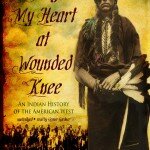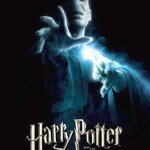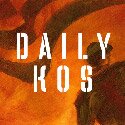Dee Brown’s book on its 40th anniversary
Culture — By Tim Giago (Nanwica Kciji) on December 15, 2009 at 07:00When Dee Brown wrote his book, “Bury My Heart at Wounded Knee,” he could not have known that it would become a classic.
This year an illustrated 40th anniversary edition was published in hardback. It is a beautiful book and the photos add so much to the stories that made the book great. There are photos of a young Black Elk, Sitting Bull, Hollow Horn Bear, Short Bull and Kicking Bear.
 The 543 page book was published by Sterling Innovation and it is truly a collector’s treasure. It can be purchased at www.sterlingpublishing.com.
The 543 page book was published by Sterling Innovation and it is truly a collector’s treasure. It can be purchased at www.sterlingpublishing.com.
The history of Wounded Knee is not such an ancient one to the Lakota people of 2009. Many Lakota living today had grandparents at Wounded Knee and some of them died there. My grandmother and grandfather lived at Kyle, just skip and a hop from the massacre site at Wounded Knee. My grandmother was just a teenager then, but she vividly remembered that day of December 29, 1890.
Just six days after the massacre, L. Frank Baum, an editor at the Aberdeen (S.D.) Saturday Pioneer, wrote an editorial calling for the genocide of the Sioux people. He later wrote the children’s book, The Wonderful Wizard of Oz.
And excerpt from Brown’s book describes the aftermath of the massacre. Brown wrote:
When the madness ended, Big Foot and more than half of his people were dead or seriously wounded; 153 were known dead, but many of the wounded crawled away to die afterward. One estimate placed the final total of dead at very nearly three hundred of the original 350 men, women and children. The soldiers lost 25 dead and thirty nine wounded most of them struck by their own bullets or shrapnel.”
“After the wounded cavalrymen were started for the agency at Pine Ridge, a detail of soldiers went over the Wounded Knee battlefield (I resent the use of the word ‘battlefield’ here and would prefer ‘massacre site’ instead) gathering up Indians who were still alive and loading them on wagons. As it was apparent by the end of the day that a blizzard was approaching, the dead Indians were left lying where they had fallen.
“The wagonloads of wounded Sioux (four men and forty-seven women and children) reached Pine Ridge after dark. Because all available barracks were filled with soldiers, they were left lying in the open wagons in the bitter cold while an inept Army officer searched for shelter. Finally the Episcopal mission was opened, the benches taken out, and hay scattered over the rough flooring.”
“It was the fourth day of Christmas in the Year of Our Lord 1890. When the torn and bleeding bodies were carried into the candlelit church, those who were conscious could see Christmas greenery hanging from the open rafters. Across the chancel front above the pulpit was strung a crudely lettered banner: Peace on Earth, Good Will to Men.”
Perhaps prematurely, Black Elk said, “I did not know then how much was ended. When I look back now from this high hill of my age, I can still see the butchered women and children lying heaped and scattered all along the crooked gulch as plain as when I saw them with eyes still young. And I can see that something else died there in the bloody mud, and was buried in the blizzard. A people’s dream died there. It was a beautiful dream . . . . the nation’s hoop is broken and scattered. There is no center any longer and the sacred tree is dead.”
This year, as in years past, Lakota men, women and children will mount their horses, and in the bitter cold of the South Dakota winter, they will begin a ride that starts at the site of Sitanka’s (Big Foot) trail that led to Wounded Knee.
When they reach the mass grave site they will dismount and hold a religious ceremony to commemorate and honor those men, women and children that lie buried there. Their prayers will ceremoniously “Wipe away the tears” and they will pray that they can find it in their hearts to forgive.
The Lakota have never forgotten that tragic day because it very nearly ended their way of life. But just like the Phoenix that rose again from the ashes to begin a new life, so have the Lakota.
Dee Brown never knew that his book would, in a small way, contribute to that cultural and spiritual revival.
Tags: american indian, american indians, books, burn my heart at wounded knee, Culture, dee brown, dorris alexander brown, native americansAuthor: Tim Giago (Nanwica Kciji) (34 Articles)

Tim Giago, an Oglala Lakota, is the editor and publisher of Native Sun News. He is the founder and first president of the Native American Journalists Association. He was a Nieman Fellow at Harvard with the Class of 1991. He was inducted into the South Dakota Newspaper Hall of Fame in 2008. His latest book, “Children Left Behind” is available through [email protected].



 Share This
Share This Tweet This
Tweet This Digg This
Digg This Save to delicious
Save to delicious Stumble it
Stumble it





 Face the truth about racial profiling
Face the truth about racial profiling Five mistakes filmmakers make in depicting race
Five mistakes filmmakers make in depicting race







